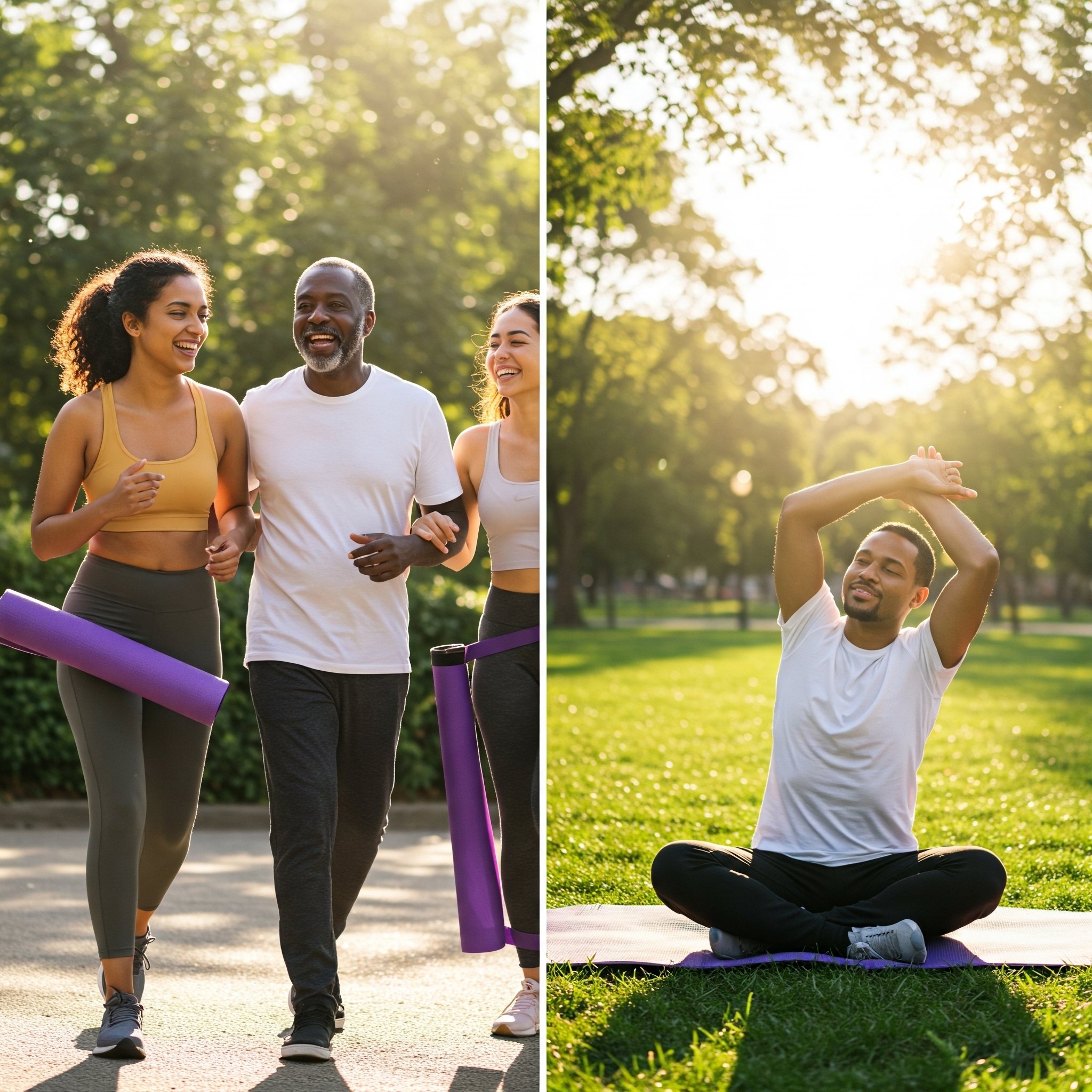The Ultimate Guide to Starting a Sustainable Fitness Routine You'll Actually Stick To
January rolls around, and the gyms are packed, social feeds are flooded with intense workout challenges, and the motivation is sky-high. Fast forward a few weeks, and for many, that initial fire has faded, replaced by exhaustion, boredom, and the familiar couch. Sound familiar?
The truth is, most fitness resolutions fail not because of a lack of desire, but because they're built on unsustainable foundations. Unrealistic goals, punishing routines we dread, and trying to fit exercise into an already overflowing schedule are recipes for burnout.
In 2025, let's change the narrative. This isn't about pushing yourself to the absolute limit every day; it's about building a sustainable fitness routine that you genuinely enjoy and can integrate into your life for the long haul. Here's your step-by-step guide to making exercise a habit you'll actually stick to.
Why Most Fitness Resolutions Crash and Burn
Before we build, let's understand the common pitfalls:
- It Feels Like Punishment: Choosing activities you hate is a direct route to quitting.
- Unrealistic Expectations: Going from zero to five intense workouts a week is a shock to the system.
- Ignoring Your Life: Not accounting for work, family, and sleep means exercise gets squeezed out.
- Lack of Enjoyment: If it's not fun, it's a chore.
- No Plan B: What happens when you miss a day? Often, the whole routine derails.
Building Your Sustainable Fitness Routine (Step-by-Step for 2025)
Ready to build fitness habits that last? Follow these steps:
- Find Activities You Actually Enjoy: This is non-negotiable! H hate running? Don't run! Love dancing? Take a class or do it in your living room! Enjoy being outdoors? Try hiking or cycling. Experiment with different types of movement – yoga, swimming, team sports, rock climbing, martial arts, walking – until you find something that makes you feel good and you look forward to. Enjoyable ways to exercise are the foundation of consistency.
- Set SMART Goals (And Be Flexible): Vague goals like "get fit" are hard to track. Make your goals Specific, Measurable, Achievable, Relevant, and Time-bound. Instead of "exercise more," try "walk for 30 minutes, 3 times a week for the next month." Start small and make them achievable fitness goals for 2025. If life happens and you miss a day, don't give up – adjust and get back on track tomorrow.
- Start Slow and Progress Gradually: This is key for fitness for beginners. Your body needs time to adapt. Begin with shorter durations and lower intensity. If walking for 15 minutes feels good, do that for a week or two before increasing to 20. Gradually build up duration, frequency, or intensity. This prevents injury and burnout.
- Integrate Movement Into Your Daily Life: Fitness isn't just about dedicated workout sessions. Look for ways to move more throughout the day. Take the stairs, walk during phone calls, do some stretches while watching TV, park further away. These small bursts of activity add up and make exercise a habit organically.
- Plan for Plateaus and Boredom: At some point, your progress might slow, or your routine might feel stale. This is normal! Plan ahead. Try a new class, increase the challenge, change your route, or incorporate different types of exercise (e.g., add some strength training if you only do cardio). Overcoming workout boredom keeps things fresh.
- Track Your Progress (Beyond the Scale): While weight can be a metric, focus on non-scale victories. Are you sleeping better? Do you have more energy? Can you walk further or lift heavier than before? Are your clothes fitting differently? Tracking these improvements provides powerful motivation and shows your routine is working.
- Prioritize Rest and Nutrition: Exercise is only one piece of the puzzle. Your body needs proper rest to recover and get stronger. Aim for 7-9 hours of sleep. Fuel your body with nutritious foods to support your activity levels and overall health. Ignoring these will hinder your progress and make sticking to the routine harder.
Tips for Staying Motivated and Building Long-Term Habits
- Schedule It: Treat your workout time like any other important appointment. Put it in your calendar.
- Find an Accountability Partner: Working out with a friend or family member can make it more fun and keep you accountable.
- Reward Yourself: Acknowledge your milestones (hitting your weekly goal, reaching a new distance). Rewards don't have to be food; they could be new workout gear, a massage, or time for a hobby.
- Be Patient and Kind to Yourself: There will be days you don't feel like it, or you miss a session. That's okay! Don't let one missed workout derail your entire week. Get back on track as soon as possible.
- Create a Supportive Environment: Lay out your workout clothes the night before, pack your gym bag, or set up your home workout space. Reduce barriers.
- Mix It Up: Don't be afraid to try different types of home workouts, explore new gym routines, or find new outdoor activities. A varied routine is more engaging.
Building a sustainable fitness routine in 2025 is about finding what works for you, listening to your body, and focusing on consistency over intensity. It's about making movement a joyful and integral part of your life, not a temporary chore. Start slow, stay consistent, and build long-term fitness habits that truly last.
Please login to leave a comment.


 Rakesh Rajbhat
Rakesh Rajbhat




